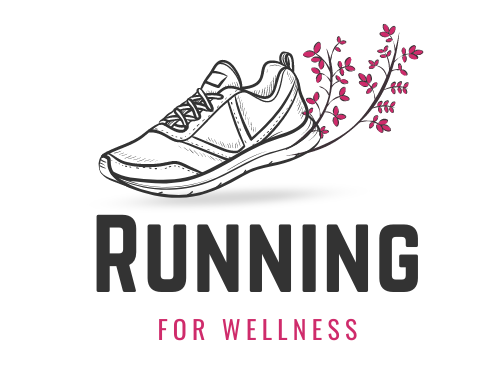Runners who practice intermittent fasting often wonder: Is it better to run in a fasted state or after breaking the fast?
The concrete answer is that both approaches can work, but the benefits and risks differ.
Running during the fasting window may boost fat metabolism, insulin sensitivity, and mental clarity, while running after breaking the fast provides more energy for performance, speed, and recovery.
The best choice depends on your training goals, whether you prioritize fat adaptation and endurance or speed and strength.
Running Inside the Fasting Window
When you run during fasting hours, your body relies more heavily on stored glycogen and fat. Glycogen reserves are limited, so as they deplete, the body shifts toward fat oxidation. This process can improve metabolic flexibility and help runners maintain steady energy levels during long-distance runs.
However, the downside is reduced explosive power and greater fatigue if you push intensity. Without quick carbohydrate availability, sprint intervals or hill training may feel much harder. Hydration and electrolytes also become more critical, since fasted states increase the risk of dizziness, headaches, and low energy.
Key Considerations for Fasted Running:
- Works best for low to moderate intensity runs.
- Helps improve fat-burning efficiency.
- May lead to quicker adaptation for endurance athletes.
- Increases risk of fatigue or performance dips if training too hard.
Running After Breaking the Fast

Breaking the fast before running means your body has immediate access to glucose for quick energy. This can make workouts feel smoother and allow you to push higher intensity, lift heavier, or run faster. Recovery may also be better since nutrients are available right after training.
The downside is that eating right before running can cause stomach discomfort if meals are too heavy. Timing matters. Light, balanced pre-run snacks such as a banana with nut butter, or oats with fruit, can provide energy without digestive issues.
Key Considerations for Fed Running:
- Supports higher-intensity runs and sprint training.
- Improves post-run recovery with available nutrients.
- Reduces risk of energy crashes compared to fasted runs.
Comparing Fasted vs. Fed Running
| Factor | Fasted Running | Fed Running |
| Best for | Endurance, fat adaptation | Speed, intervals, strength |
| Energy availability | Low–moderate | High |
| Recovery | Slower, limited nutrients | Faster, nutrients available |
| Performance | Stable for long runs, weaker at high intensity | Strong at high intensity, short runs |
| Risks | Fatigue, dizziness, and muscle breakdown if overdone | GI discomfort if meals are poorly timed |
Practical Guidelines for Runners

The key is balance, not strict rules. You don’t need to stick exclusively to either fasted or fed running. Many experienced runners use a mix of both, depending on the purpose of the workout. For example, a fast run works well on easy days or during long, steady runs where the goal is to build endurance and improve fat adaptation.
On the other hand, fueling before interval sessions, hill sprints, or races ensures your body has the quick energy needed for maximum performance.
If you are new to intermittent fasting, the smartest approach is to begin cautiously. Start with short, low-intensity runs in a fasted state and gradually extend distance and effort as your body adapts.
Always listen carefully to your signals; feeling lightheaded, dizzy, or overly fatigued is a sign to refuel and adjust. Hydration remains critical whether you are running fasted or fed, since dehydration compounds fatigue and increases injury risk. Adding electrolytes to longer runs can further help maintain balance and performance.
Smart Tools for Supporting Fasted Training
Managing nutrition, metabolism, and training schedules can feel overwhelming. That’s where modern tools can help.
For example, a fasting helper like Lumen can guide you by analyzing your metabolism in real time. Such devices help you decide whether your body is primarily burning fat or carbs, making it easier to plan whether a fasted run or a fed run is more effective on any given day.
This kind of data-driven approach ensures your fasting and running routines are not guesswork but tailored to your physiology.
Who Should Avoid Fasted Running?

| Group | Why It’s Risky | Recommended Approach |
| Beginners | Sudden energy demand is difficult to handle; it may lead to dizziness or discouragement. | Start with short, fast runs until endurance improves. |
| People with low blood sugar or metabolic conditions | Greater risk of hypoglycemia and energy crashes. | Always eat before training; focus on steady carb intake. |
| Pregnant or nursing women | Both mother and child require a consistent nutrient supply. | Fuel before exercise with balanced meals and snacks. |
| Athletes in the competition phase | Performance, speed, and recovery take priority over fat adaptation. | Stick to fed training for peak output. |
| Muscle-focused athletes | Higher chance of muscle breakdown without available fuel. | Consume protein + carbs before running to protect lean mass. |
Fasted training is not a one-size-fits-all method. Certain groups should avoid it altogether, as the risks outweigh potential benefits. Beginners often struggle with the sudden energy demands of running without fuel, while individuals with a history of low blood sugar or metabolic conditions may face dangerous drops in energy.
Pregnant or nursing women also need consistent nutrition for both themselves and their child, making fasted runs inappropriate. Similarly, athletes in peak competition phases typically avoid fasted training because performance, speed, and recovery take priority over fat adaptation.
Fasted running can also be counterproductive for those aiming to build or maintain muscle. Running on empty increases the chance of muscle breakdown, especially during longer or harder efforts, because the body may turn to protein as a backup energy source.
In such cases, fueling before exercise with a balanced intake of protein and carbohydrates is essential to protect lean mass and support recovery.
Final Thoughts
Intermittent fasting and running can be compatible, but the right choice depends on your goals and your body’s response. If you’re aiming for endurance, metabolic flexibility, and fat loss, fasted runs can be powerful. If speed, strength, and recovery are your focus, fed runs may serve you better. The smartest approach is often a hybrid, using faster runs strategically and fueling up when intensity or performance demand it.
Related Posts:
- Should You Run on an Empty Stomach? Pros and Cons Explained
- 25 Simple Running Motivation Tips To Get You Moving
- Top 400 Hilarious Gym Quotes to Keep You Motivated
- How Can You Start a Career as a Running Coach?
- How Long Does It Take to Train for a Half Marathon?
- How Far Is a Half Marathon? Everything You Need to Know







